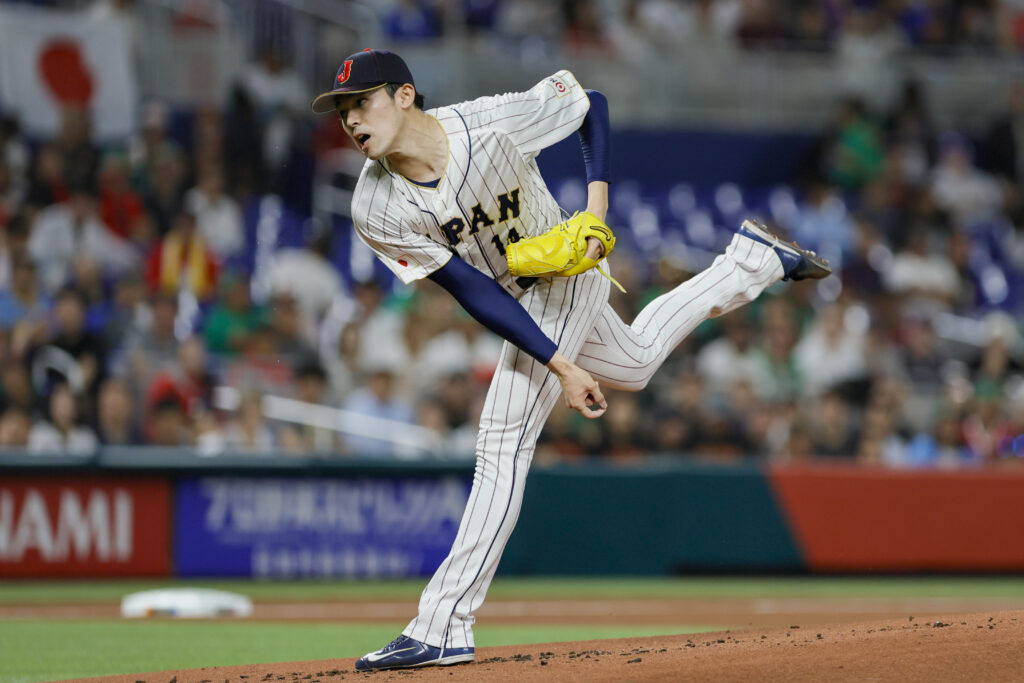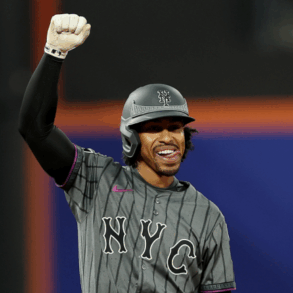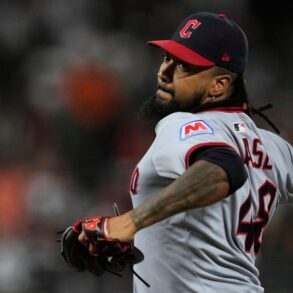
Within the next ten days, we’ll know where right-hander Roki Sasaki will be playing for the foreseeable future. The Japanese right-hander is one of the most talked-about international free agents in recent memory, due to a combination of age (23), pedigree (2.10 ERA in four NPB seasons) and his decision to potentially leave hundreds of millions on the table by pursuing an MLB move right now rather than in two years, when he’d be exempt from MLB’s bonus pool system for international “amateurs.” There’s been plenty of talk about the Dodgers and Padres as favorites, but Ken Rosenthal and Andy McCullough of The Athletic report that Sasaki recently traveled to Toronto to meet with the Blue Jays in person.
Back at last month’s Winter Meetings, agent Joel Wolfe of Wasserman laid out a timeline in which Sasaki would receive presentations from all interested teams and host interested parties at a central location prior to the holidays. The right-hander then planned to narrow the field and, post-holidays, meet with a smaller group of clubs in their home cities. That the Jays hosted Sasaki in Toronto ostensibly indicates that they’re still in the running in what’s effectively the second round of consideration.
That shouldn’t be construed with Toronto being considered any sort of favorite, however. Pinning down any kind of favorite at this stage remains difficult because so much hinges on the preferences of Sasaki himself. Baseball America’s Ben Badler just this morning ranked the Dodgers, Padres, Yankees and Rangers — in that order — as the likeliest to sign Sasaki.
The Dodgers and Padres have been the most heavily speculated landing spots — so much so in the case of the former that Wolfe felt obligated to publicly quash rumors of a pre-meditated deal between the two parties. Los Angeles and San Diego are both still believed to be in the running for Sasaki, who’s also been linked to the Mets, Rangers, Cubs, Mariners and Giants in recent weeks. It’s not yet clear which of those teams have hosted Sasaki for an in-person meeting at their own sites just yet.
Ultimately, the decision will boil down to where Sasaki feels most comfortable and which team he feels gives him the best long-term opportunity to develop as a pitcher. Wolfe has stated that market size isn’t a consideration. He said at last month’s Winter Meetings that he’d advise Sasaki against simply signing for the largest bonus right now, as the difference between theoretical bonus offers would be “negligible” compared to the “long-term arc of [Sasaki’s] career,” which is where he’ll truly earn his money.
Teams will still very likely to try to swing some deals to add space to their international bonus pools as they try to do everything they can to make themselves most enticing, but at least based on Wolfe’s prior comments — and based on how much Sasaki is leaving on the table to come to North American ball right now — it’s fair to presume that Sasaki won’t simply be going to the highest possible bidder.
Trade activity regarding bonus pool space is just one manner in which the international amateur market — which opens on Wednesday — is being thrown into chaos. Will Sammon, Dennis Lin and McCullough report at The Athletic that the Padres have told some international prospects with whom they’d previously reached handshake deals that they’re free to again talk to other clubs. Both the Padres and the Dodgers have also asked some within their expected group of signees if they’d wait to sign until next year’s period, per the report. The Dodgers already lost one high-profile prospect from their class to the Pirates.
It should be noted that while Sasaki cannot formally sign a contract prior to Jan. 15 and must sign by Jan. 23 (the final date in his 45-day posting window), he can agree to terms on a deal prior to either of those dates. It’s not clear of the right-hander is still traveling to meet with prospective clubs in their home locales, but in theory he could make his decision at any point now and simply sign on the dotted line when the international period opens. In that sense, it’s similar to any other free agent; it’s commonplace for an agreement to be reached, leak out to the public and only be formally announced by the team a few days later after the physical has been completed.
As a reminder of how this will all work, Major League Baseball’s international amateur bonus system allows clubs to sign players from Latin America, Asia, Europe, etc. beginning at age 16. Clubs scout players — particularly those in Latin America — for years ahead of time, often agreeing to handshake deals more than a year (sometimes two or three years) in advance. The league hard-caps each team’s bonus pool. Clubs are permitted to trade for up to 60% of the value of their initial bonus pools.
This year’s bonus pools range from $5.146MM (Dodgers, Giants) to $7.555MM (Reds, Tigers, Marlins, Twins, Brewers, A’s, Mariners, Rays). In theory, one of those eight clubs with the maximum pool size could trade to balloon their pool to $12.088MM. There’s no indication any of those clubs will do so, however.
International “amateur” players can only sign a minor league deal for a bonus that fits within a team’s allotted pool space (plus any additional space acquired via trade). Because of the stringent criteria to be classified a “professional” rather than an “amateur,” Sasaki will fall into the amateur bucket. MLB stipulates that a player must be at least 25 years of age and have six or more seasons of experience in a prominent foreign professional league (e.g. Nippon Professional Baseball, Korea Baseball Organization, Mexican League, Chinese Professional Baseball League, Cuban National Series, etc.). Had Sasaki waited two years, he might’ve been in line for the type of contract received by Yoshinobu Yamamoto (13 years, $325MM). Instead, he’ll sign a minor league deal with a bonus valued south (likely well south) of that $12.088MM maximum.
This post was originally published on this site be sure to check out more of their content.






